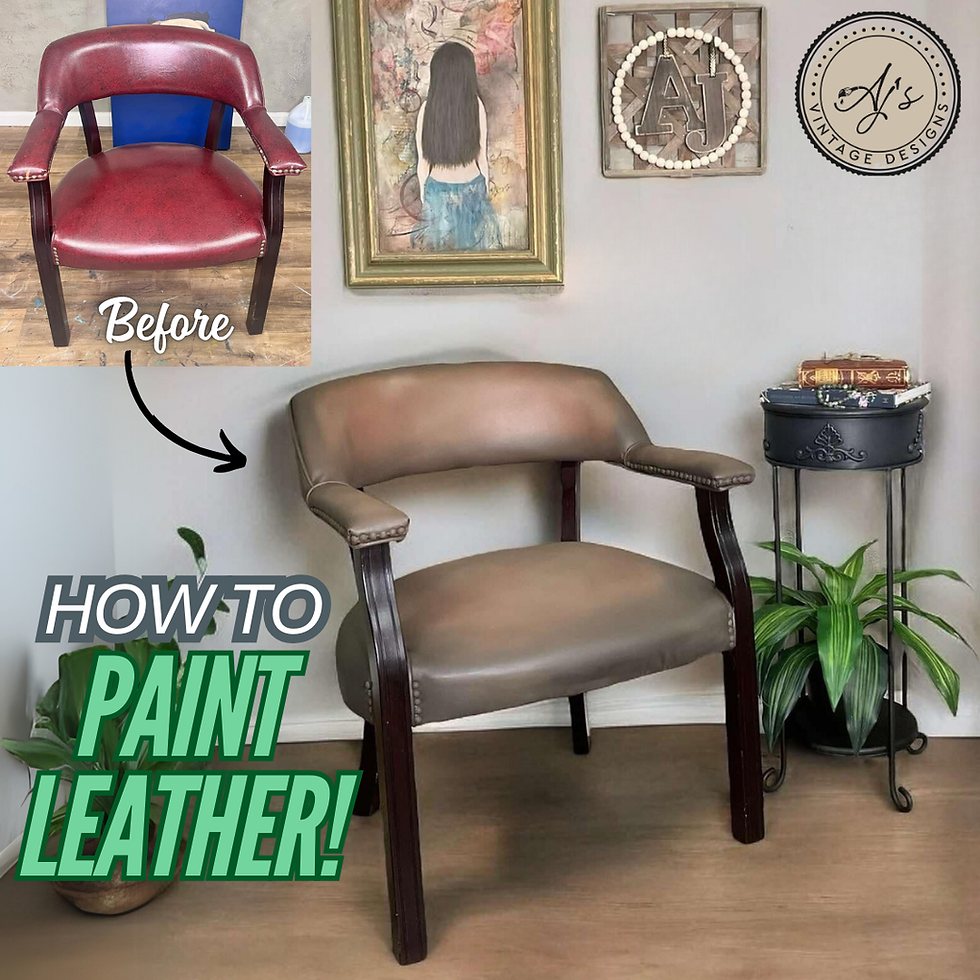Sealing Dark Colors
- ajsvintagedesigns
- Apr 7, 2020
- 4 min read
Updated: Jan 12, 2023
One of the biggest struggles people have with protecting their hand painted furniture (when using dark colors) is applying a streak free final clear coat. Today I will be walking you through tips when using a clear coat.
I use Dixie Belle’s clear coats and their popular Gator Hide (their water repellant toughest top coat). You will see text in blue in this blog.
If you prefer to watch a video vs read a blog, here’s the link to the LIVE video I did covering all the steps and also an added “special technique” for those who want an easier solution.
Video of my LIVE tutorial on Facebook: https://www.facebook.com/DixieBellePaint/videos/514631262587481/
The main thing you need to remember is that your top coal (also called clear coat) is only going to look as nice as the paint job it will be sealing. If you have a lot of brush strokes, unevenness, streaking with your paint… then you will have the same showing through your top coat. I like to use a 220 or higher sand paper (1000 grit is great) and very lightly wipe it over your paint surface to give it a buttery smooth finish.
I prefer to wait at least 24 hours after painting before applying my top coats. I want to make sure my paint has dried nicely and that I’m not risking reactivating my paint when I apply my top coat.
Here are a few more tips:
Use a good quality, clean brush for applying your top coat or a top coat sponge (one that is dense and doesn’t have large pores. ( I normally use the Dixie Belle Mini or their Blue Sponge for my top coat applications). You top coat is what gives your piece that finished look so if you use a cheap quality brush or low quality applicator, then you have more of a chance of seeing streaks and brush strokes in your finish.

If you live in a cooler climate area, you can set your clear coat container in a dish of warm water to warm it up a little which also helps with having a little longer open time to work with it. I learned this trick from Rehab to Fab (Stephanie Coon). I usually do this in the colder months with my Gator Hide (Dixie Belle’s toughest top coat which is water repellant and water resistant after it cures).
If you are using a top coat over a dark color, you can tint your water based clear coat with a “tiny” amount of paint to help with the even coverage. When I mean “tiny”, I mean I dip my spoon into my paint (1/3 of my spoon) and use just the paint that sticks to my spoon…I don’t scoop up any paint. Too much paint will change the formulation of your top coat and not give you the protection you are looking for.


Apply in long even strokes (don’t do short choppy strokes are you will see the start and stop marks in your finish). Apply each pass of your piece, not going back to touch up missed areas….you can get any missed areas on your second coat. This will help with not “over working” your top coat and causing drag marks. If working with a Satin or Flat top coat, you usually have more open time to work with it so you can go back quickly to do another pass if you missed an area. But with Gator Hide or other tough top coats that have a short open time, don’t take the risk and cause a drag mark.

Allow at least 2 to 4 hours between coats. Don’t rush it with a heat gun, let it dry naturally. I limit myself to on 2 coats per 24 hour period. You can lightly sand between coats with a high grit sand paper (1000 is best but if you don’t have that…. just make sure its at least 220 or higher)a sanding sponge, a fine finishing pad or you can use 0000 steel wool.

Avoid using too much water (either on your brush or sponge)….water can get trapped in your top coat and cause bubbles or a haze (called Ghosting). I prefer a dry brush but if you want to “mist” your brush or sponge lightly with water you can ….just make sure it is lightly misted not “wet” or “very damp”.
Don’t be HEAVY handed. A light brush hand is key. Let the brush do the work and don’t press down hard or be in a rush. Take your time, long soft and slow passes allows the top coat product come off your brush or sponge naturally and not forced …if you force it you will create brush strokes or ridges on each side of your applicator sponge.
I hope this helped you. Sealing your furniture or projects with clear coats can be tricky and sometimes frustrating. Practice on a smoothly sanded and painted board so that you can get the feel for the process and then take those skills and try it on your furniture.




Comments